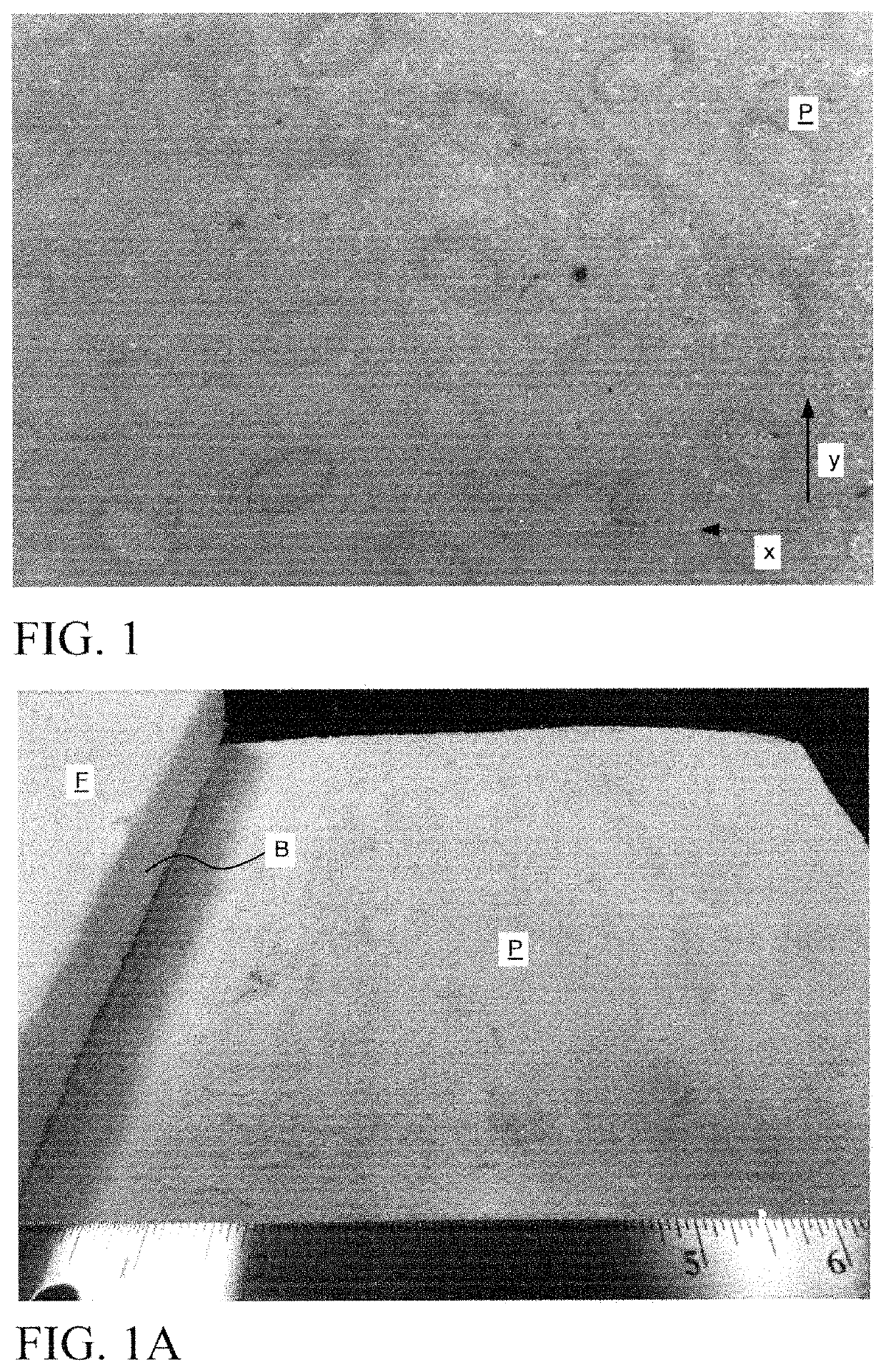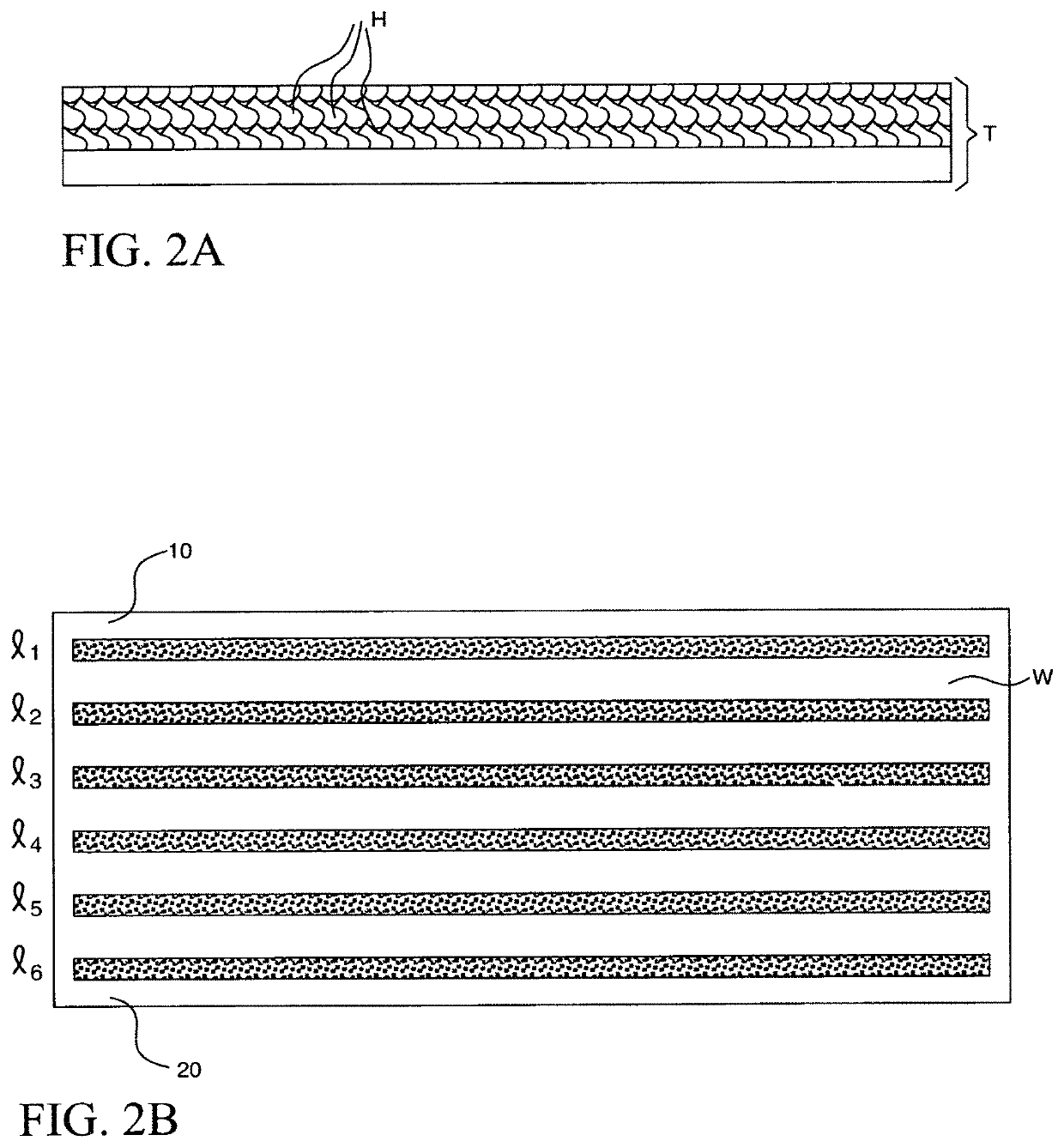Foam reefer wall backing with spaced rows of loops for better adhesion
a technology of reefer wall and loop, which is applied in the direction of packaging, railway components, synthetic resin layered products, etc., can solve the problems of inherently increasing the bonding capability of the scrim surface, limiting the success of various methods to enhance the bond, and too broad encompassing, so as to achieve less potential downtime, greater adhesion, and less thermal efficiency loss
- Summary
- Abstract
- Description
- Claims
- Application Information
AI Technical Summary
Benefits of technology
Problems solved by technology
Method used
Image
Examples
first embodiment
[0050]FIG. 2B is a drawing showing improved reefer wall W with a plurality of lateral hook tape sections (l1 through l6) applied in a spaced, horizontal arrangement from near the top 10 to near the bottom 20 of wall W prior to the application of foam thereto;
second embodiment
[0051]FIG. 2C is a drawing showing improved reefer wall W with a plurality of hook tape sections (d1 through d7) applied in a spaced, diagonal arrangement from left to right, from near the top 10 to near the bottom 20 of wall W prior to the application of foam thereto; and
[0052]FIG. 2D is a drawing showing a third, representative embodiment of improved reefer wall W with a plurality of circular-shaped hook tape sections c applied randomly to just a lower section 20 of wall W (in a typically more vulnerable region for delamination or loading damage) prior to the application of foam thereto. These are but three such arrangements, it being understood that still other arrangements of full hook tape, various subsections of hook material (in rectangles, squares, triangles, etc.) may be randomly or purposefully placed about in an orderly pattern prior to “foaming”. To a lesser degree, the looped “partner” to such hook sections may be situated about, in place of (i.e., in the alternative) O...
PUM
| Property | Measurement | Unit |
|---|---|---|
| size | aaaaa | aaaaa |
| size | aaaaa | aaaaa |
| heights | aaaaa | aaaaa |
Abstract
Description
Claims
Application Information
 Login to View More
Login to View More - R&D
- Intellectual Property
- Life Sciences
- Materials
- Tech Scout
- Unparalleled Data Quality
- Higher Quality Content
- 60% Fewer Hallucinations
Browse by: Latest US Patents, China's latest patents, Technical Efficacy Thesaurus, Application Domain, Technology Topic, Popular Technical Reports.
© 2025 PatSnap. All rights reserved.Legal|Privacy policy|Modern Slavery Act Transparency Statement|Sitemap|About US| Contact US: help@patsnap.com



